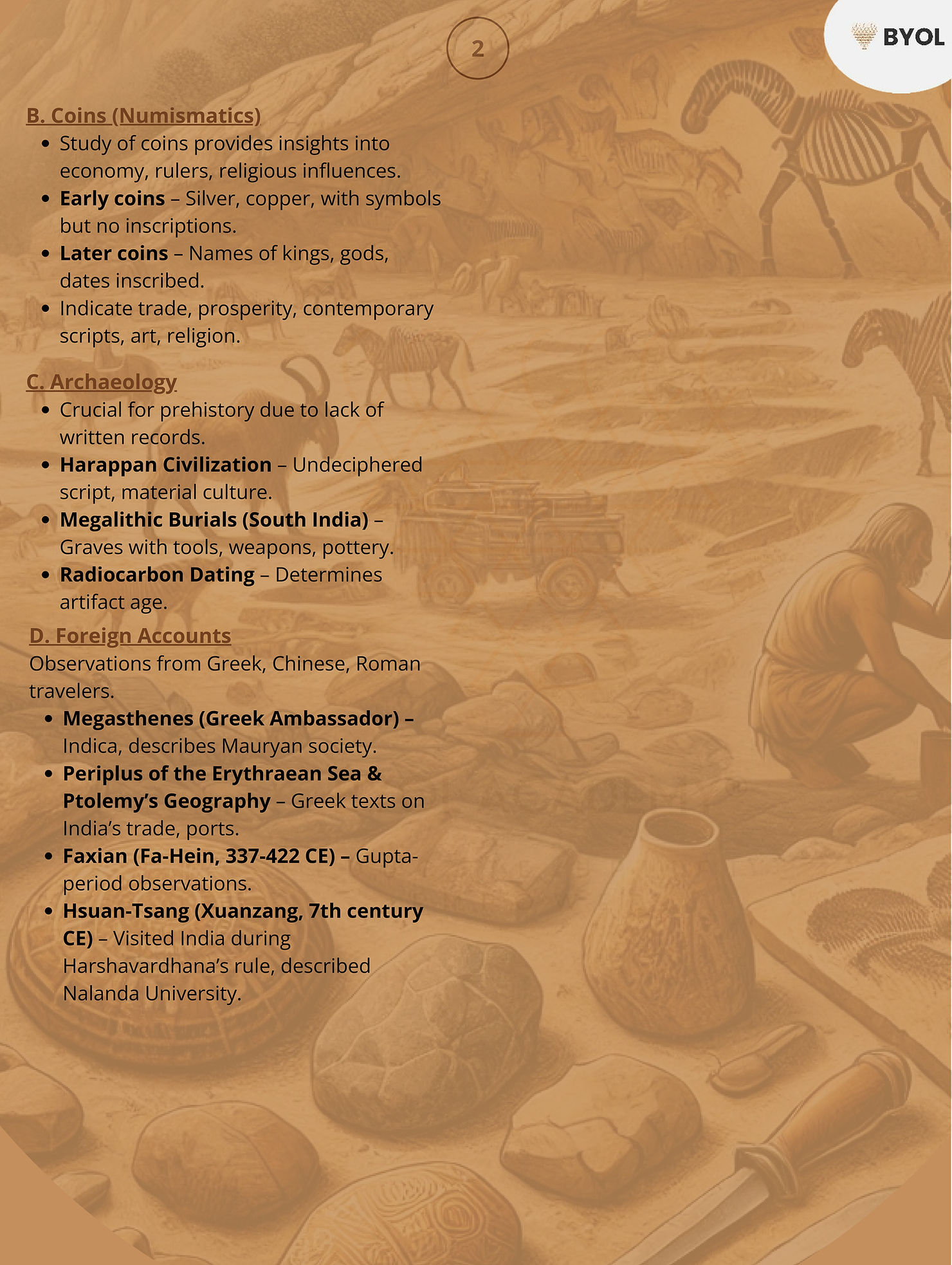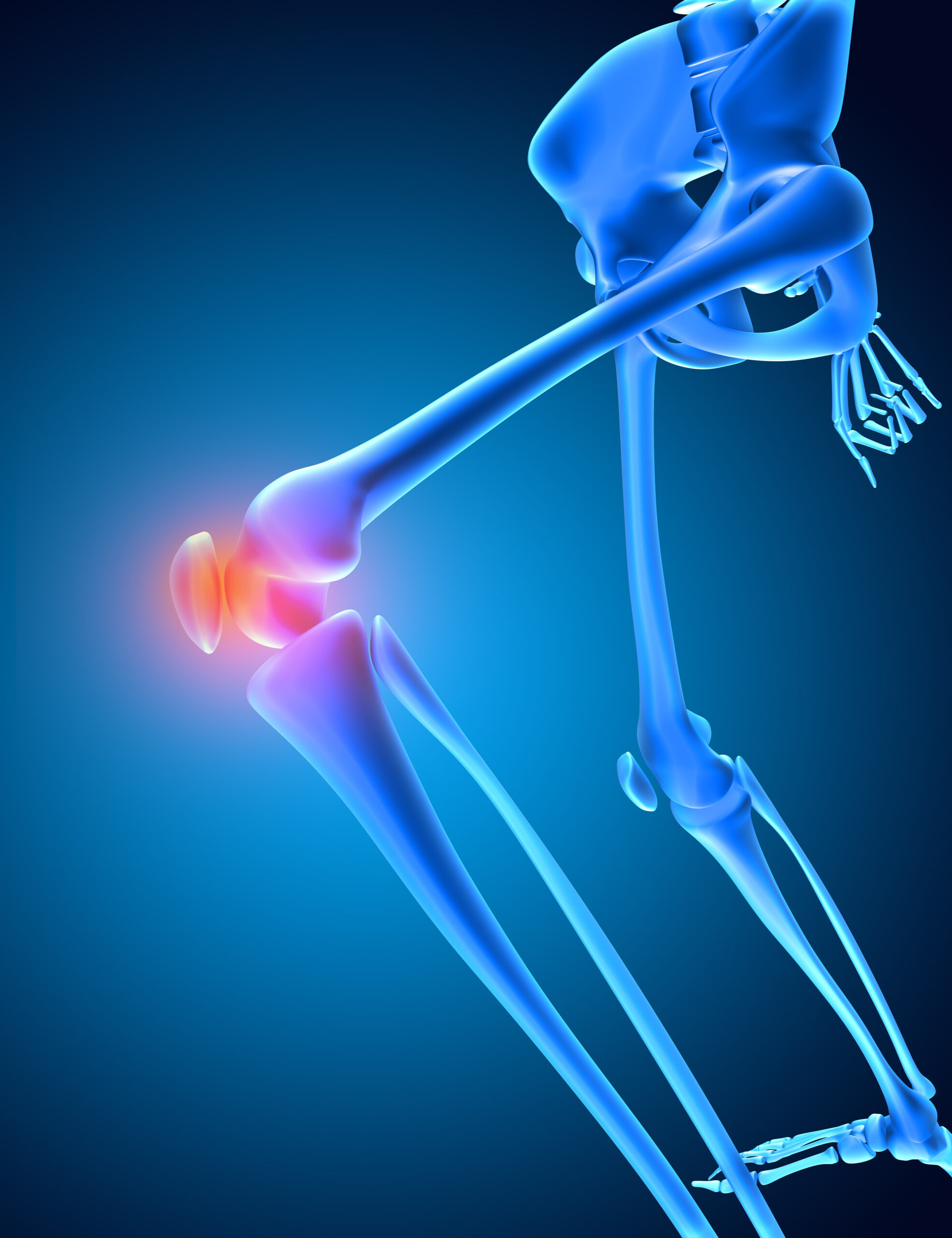Introduction
The lack of written evidence makes reconstructing prehistoric India difficult. A variety of materials, which can be broadly divided into literary and non-literary sources, are used by historians. The social, political, economic, and cultural facets of prehistoric and ancient India are all well-explained by these sources.
Summary of Prehistoric India
| Category | Literary Sources | Non-Literary Sources |
| Definition | Written texts that provide historical information. | Physical and material evidence that helps in reconstructing history. |
| Types | Religious LiteratureSecular Literature | InscriptionsCoinsArchaeologyForeign Accounts |
| Examples | Vedas (Rig Veda, Sama Veda, Yajur Veda, Atharva Veda)UpanishadsEpics (Ramayana, Mahabharata)Buddhist Texts (Tripitaka)Jaina Texts (Angas) | Ashokan Inscriptions (Prakrit, Brahmi, Kharosthi)Copper Plate InscriptionsPunch-marked CoinsGold Coins of Gupta EmpireHarappan ArchaeologyMegasthenes’ Indica |
| Nature | Written records, often descriptive and interpretative. | Physical remains providing direct evidence. |
| Language Used | Sanskrit, Pali, Prakrit, Tamil | Engraved in Prakrit, Sanskrit, Greek, Aramaic, and other ancient scripts |
| Reliability | May contain exaggerations and mythological elements. | More reliable as they provide concrete evidence. |
| Significance | Provides information on philosophy, governance, society, and culture. | Helps in dating events, economic analysis, and understanding material culture. |
Literary Sources
Literary sources are further divided into religious literature and secular literature.
Religious Literature
Although the main focus of religious texts is spirituality and philosophy, they also indirectly refer to the history, culture, and economics of the times in which they were written.
- Vedas (1500–500 BCE) – The Vedas are the oldest known religious texts of India and are divided into 4 parts:
| Rig Veda | Contains hymns and praises of various gods. |
| Sama Veda | Includes chants and melodies used in sacrifices. |
| Yajur Veda | Provides instructions for rituals and sacrifices. |
| Atharva Veda | Deals with magical spells, charms, and rituals. |
- Upanishads – These writings address significant philosophical debates on the ultimate reality (Paramatma) and the soul (Atma). They offer important new perspectives on the intellectual and spiritual development of Indian society.
- Epics – Ramayana and Mahabharata
| Mahabharata (by Vyasa) | Initially called Jaya Gita with 8,800 verses, later expanded to 24,000 verses (Bharata) and finally to 100,000 verses (Mahabharata). It narrates the story of the Kuru dynasty and includes the Bhagavad Gita. |
| Ramayana (by Valmiki) | Originally had 6,000 verses, later expanded to 12,000 and finally to 24,000 verses. It describes the story of Lord Rama. |
- Sutras – Ritual texts providing guidance on religious and social practices:
| Shrautasutras | Discuss royal sacrifices and coronation ceremonies. |
| Grihya Sutras | Explain domestic rituals, including birth, marriage, and funeral rites. |
- Buddhist Literature (Tripitaka) – Early Buddhist texts in Pali language:
| Sutta Pitaka | Contains Buddha’s discourses. |
| Vinaya Pitaka | Deals with monastic rules for monks. |
| Abhidhamma Pitaka | Discusses Buddhist philosophy and psychology. |
- Jaina Literature – The Jaina Literature is written in Prakrit, these texts, called Angas, document Jain philosophy, political history, and trade activities during Mahavira’s era.
Secular Literature
These texts do not primarily deal with religion but offer insights into the political, social, and economic conditions of ancient India.
- Dharmashastras (Law Books) – These texts highlight laws governing different varnas (castes), the role of kings and officials, property laws, and criminal punishments.
- Arthashastra (by Kautilya) – An important text on statecraft, economy, military strategy, and governance, reflecting the Mauryan era.
- Kalidasa’s Works – The profound Sanskrit poet Kalidasa wrote plays and poems like Abhijnanasakuntalam, which shed light on Gupta-era society and culture.
- Rajatarangini (by Kalhana) – A historical text states about the political and social history of 12th-century Kashmir.
- Charitas (Biographies) – Court poets wrote biographies glorifying rulers, such as Harshacharita by Banabhatta about Harshavardhana.
- Sangam Literature (Tamil) – The earliest South Indian literature, composed by poets of Sangam assemblies, provides valuable details about Tamil Nadu’s political, social, and economic conditions. Notable works include:
- Silappadikaram (by Ilango Adigal)
- Manimekalai (by Sattanar)
Non-Literary Sources
Sources that are not literary offer concrete proof of historical occurrences and cultural advancements. Inscriptions, coinage, archaeological discoveries, and firsthand reports are some examples of these sources.
Inscriptions
Inscriptions, engraved on stone, metal, or terracotta, record achievements, events, and royal decrees. The study of inscriptions is called epigraphy.
- Early inscriptions were in Prakrit, the language of common people, but later Tamil and Sanskrit were also used.
- Mauryan King Ashoka issued the first large-scale inscriptions, mainly in the Brahmi script, while some in the northwest were in Kharosthi, Aramaic, and Greek.
- Prashastis were inscriptions composed by poets to praise kings and patrons.
Coins (Numismatics)
Coins provide evidence of economic history, trade, rulers, and religious influences. The study of coins is called numismatics.
- The earliest Indian coins, made of silver and copper, had symbols but no inscriptions.
- Later, coins started carrying the names of kings, gods, and sometimes dates.
- Coins indicate the prosperity of different dynasties and give insights into contemporary scripts, art, and religion.
Archaeology
As there are no written documents from the prehistoric era, archaeology is essential to understanding it. In order to comprehend the material existence of ancient people, it entails the methodical excavation of ancient mounds.
- Harappan Civilization – Harappans had a script, but it remains undeciphered. The earliest deciphered script is Brahmi from Ashokan inscriptions (3rd century BCE).
- Megalithic Burials – In South India, graves with tools, weapons, pottery, and other belongings provide clues about early societies. Radiocarbon dating helps determine their age.
Foreign Accounts
Greek, Chinese, and Roman visitors documented valuable observations about India’s history, society, and economy.
- Megasthenes (Greek Ambassador) – Wrote Indica, describing Mauryan society, governance, and economic conditions.
- Periplus of the Erythraean Sea & Ptolemy’s Geography – Greek texts providing details about India’s ports and trade relations with the Roman Empire.
- Faxian (Fa-Hein, Chinese Buddhist Monk, 337-422 CE) – Recorded observations about India during the Gupta period.
- Hsuan-Tsang (Xuanzang, Chinese Pilgrim) – Visited India during King Harshavardhana’s reign and described Nalanda University and the socio-political landscape.
Conclusion
Prehistoric and ancient India’s history was recreated using both literary and nonliterary sources. Inscriptions, coinage, archaeological discoveries, and testimonies from other countries offer tangible proof of historical events, while religious and secular writings offer insights into social structure, governance, and philosophical ideas. Although these sources serve as the cornerstone of India’s historical narrative and are necessary to understand the development of Indian mankind.






